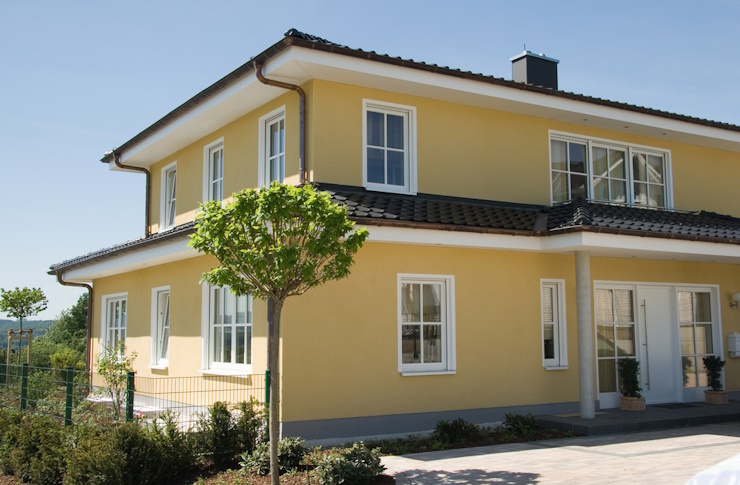New Prefab ADUs & Modular Homes: How Prebuilt Solutions Save Time & Money
Prefabricated homes have evolved well beyond the simple “mobile unit.” From backyard ADUs (Accessory Dwelling Units) to full-scale custom modular designs, the range of styles and price points might surprise you. In this article, we’ll explore how factory-built components can dramatically reduce on-site construction time, outline factors that affect cost (especially for ADUs), and share tips for choosing the right builder. Whether you’re curious about a compact guest suite or a personalized two-bedroom prefab, this guide can help you get started

Prefab Revolution: ADUs vs Traditional Home Additions
Homeowners seeking to expand their living space face a crucial decision: prefabricated Accessory Dwelling Units (ADUs) or traditional home additions. This choice impacts not only the property’s value but also the family’s lifestyle. As the housing market evolves, understanding the pros and cons of each option becomes essential for making an informed decision.
The Rise of Prefab ADUs
Prefabricated ADUs have gained popularity in recent years, offering a quick and efficient solution for homeowners looking to add extra living space. These units are manufactured off-site and assembled on the property, significantly reducing construction time and minimizing disruption to daily life. Prefab ADUs come in various styles and sizes, from studio apartments to multi-bedroom units, catering to diverse needs and preferences.
Traditional Home Additions: A Time-Tested Approach
Traditional home additions have been the go-to solution for expanding living space for decades. This method involves constructing an extension to the existing house, seamlessly integrating it with the original structure. While it may take longer to complete, traditional additions offer customization options and the ability to maintain architectural consistency with the main house.
Comparing Costs and Timelines
One of the most significant factors in choosing between prefab ADUs and traditional additions is the cost and timeline. Prefab ADUs generally have a more predictable cost structure and shorter construction time. On average, a prefab ADU can be installed within 4-12 weeks, depending on size and complexity. Traditional additions, however, may take several months to complete and are more susceptible to cost overruns due to unforeseen complications.
Design Flexibility and Customization
When it comes to design flexibility, both options have their merits. Prefab ADUs offer a range of pre-designed layouts that can be customized to some extent. Many manufacturers provide options for finishes, fixtures, and color schemes. Traditional additions, on the other hand, offer unlimited customization potential, allowing homeowners to tailor every aspect of the new space to their exact specifications.
Zoning and Permit Considerations
Navigating zoning laws and obtaining necessary permits can be a complex process for both prefab ADUs and traditional additions. However, many municipalities have streamlined the approval process for ADUs to encourage their adoption as a solution to housing shortages. Traditional additions may face more scrutiny, especially in areas with strict building codes or historic preservation requirements.
- Prefab ADUs often have pre-approved designs, simplifying the permit process
- Traditional additions may require more extensive documentation and review
- Some areas offer expedited permitting for ADUs to promote affordable housing
- Homeowners should consult local zoning offices before making a decision
- Both options may require site inspections and compliance with building codes
Impact on Property Value and Resale
When considering the long-term impact on property value, both prefab ADUs and traditional additions can be beneficial investments. However, their effects may differ depending on market conditions and buyer preferences. Traditional additions typically integrate seamlessly with the existing home, potentially increasing the overall square footage and value proportionally. Prefab ADUs, while separate from the main house, offer flexibility and potential rental income, which can be attractive to certain buyers.
To provide a clearer picture of the options available, here’s a comparison of some popular prefab ADU providers and their offerings:
| Provider | ADU Type | Size Range (sq ft) | Estimated Cost Range |
|---|---|---|---|
| Abodu | Studio to 2-bedroom | 340-500 | $189,000-$259,000 |
| Dweller | Studio to 1-bedroom | 384-426 | $125,000-$175,000 |
| Connect Homes | 1 to 2-bedroom | 460-960 | $199,000-$379,000 |
| LivingHomes | Studio to 3-bedroom | 400-1,500 | $199,000-$499,000 |
Note: Cost estimates are based on base models and may vary depending on location, customization, and site preparation requirements. It’s recommended to conduct independent research and obtain quotes specific to your property and needs.
Weighing the Pros and Cons
Ultimately, the choice between a prefab ADU and a traditional home addition depends on various factors, including budget, timeline, design preferences, and long-term goals. Prefab ADUs offer speed, predictability, and potential rental income, while traditional additions provide seamless integration and extensive customization. Homeowners should carefully consider their specific needs and consult with professionals to make the best decision for their property and lifestyle.
The shared information of this article is up-to-date as of the publishing date. For more up-to-date information, please conduct own research.




